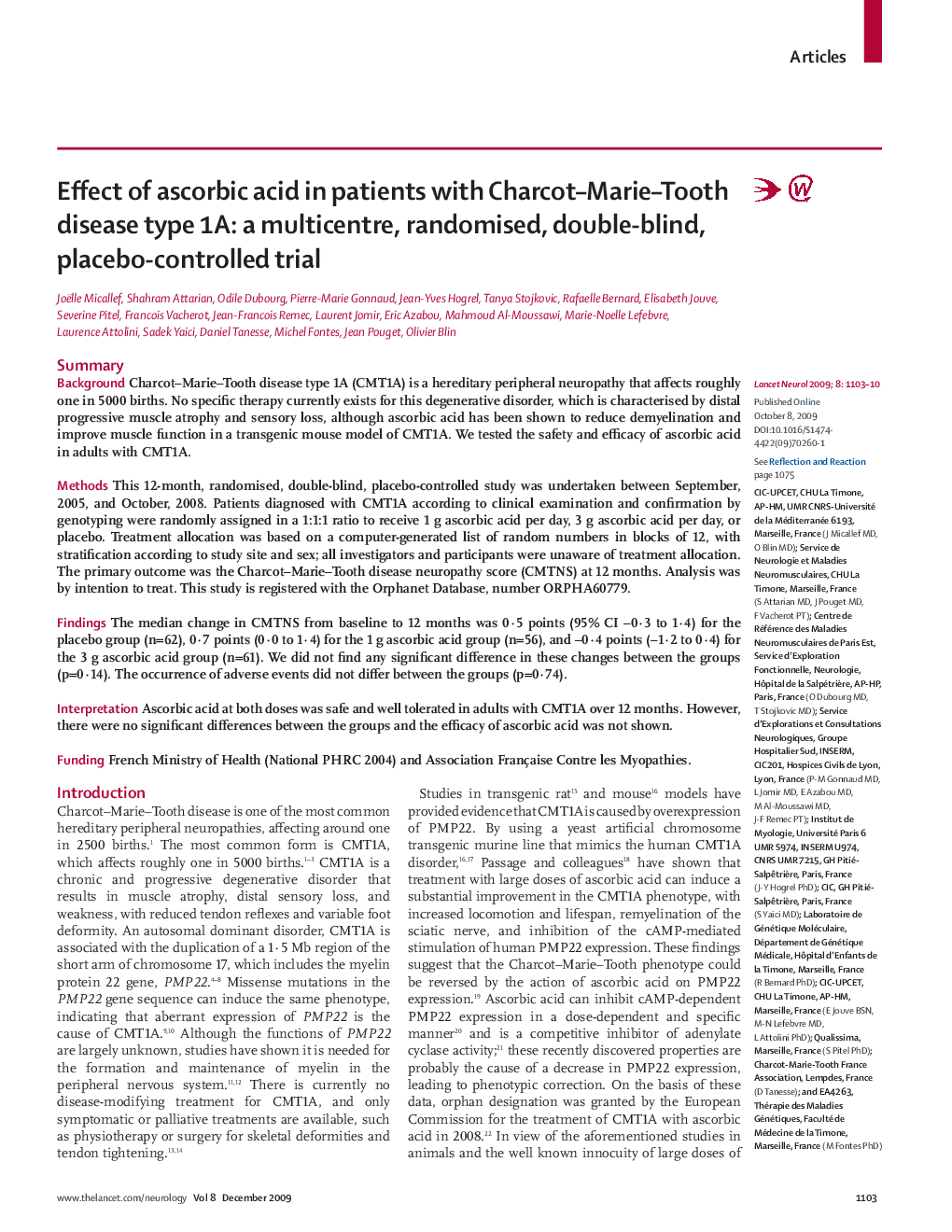| Article ID | Journal | Published Year | Pages | File Type |
|---|---|---|---|---|
| 3067386 | The Lancet Neurology | 2009 | 8 Pages |
SummaryBackgroundCharcot–Marie–Tooth disease type 1A (CMT1A) is a hereditary peripheral neuropathy that affects roughly one in 5000 births. No specific therapy currently exists for this degenerative disorder, which is characterised by distal progressive muscle atrophy and sensory loss, although ascorbic acid has been shown to reduce demyelination and improve muscle function in a transgenic mouse model of CMT1A. We tested the safety and efficacy of ascorbic acid in adults with CMT1A.MethodsThis 12-month, randomised, double-blind, placebo-controlled study was undertaken between September, 2005, and October, 2008. Patients diagnosed with CMT1A according to clinical examination and confirmation by genotyping were randomly assigned in a 1:1:1 ratio to receive 1 g ascorbic acid per day, 3 g ascorbic acid per day, or placebo. Treatment allocation was based on a computer-generated list of random numbers in blocks of 12, with stratification according to study site and sex; all investigators and participants were unaware of treatment allocation. The primary outcome was the Charcot–Marie–Tooth disease neuropathy score (CMTNS) at 12 months. Analysis was by intention to treat. This study is registered with the Orphanet Database, number ORPHA60779.FindingsThe median change in CMTNS from baseline to 12 months was 0·5 points (95% CI −0·3 to 1·4) for the placebo group (n=62), 0·7 points (0·0 to 1·4) for the 1 g ascorbic acid group (n=56), and −0·4 points (−1·2 to 0·4) for the 3 g ascorbic acid group (n=61). We did not find any significant difference in these changes between the groups (p=0·14). The occurrence of adverse events did not differ between the groups (p=0·74).InterpretationAscorbic acid at both doses was safe and well tolerated in adults with CMT1A over 12 months. However, there were no significant differences between the groups and the efficacy of ascorbic acid was not shown.FundingFrench Ministry of Health (National PHRC 2004) and Association Française Contre les Myopathies.
